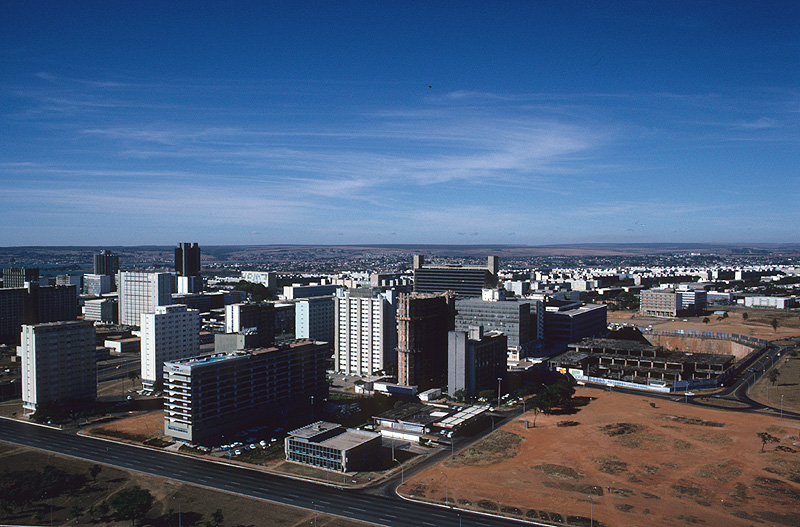Source: WTL photograph© on site in Brasília.
Comments: From 1891 to 1955, various Brazilian national governments wanted to develop the interior of their country. The development of the interior with a brand new capital was the centerpiece of the government of president Jucelino Kubitschek in 1955. The lead architect for the city plan was Lúcio Costa (1902-1998), and the architect of the public buildings was Oscar Niemeyer, who was a student of the French architect Le Corbusier. Brasília's international airport was built before any roads were constructed connecting the capital to the rest of the country. The first road was 460 miles long to Belo Horizonte to the SE. The new city became the official national capital in 1960, displacing Rio de Janeiro. In 1987, Brasília was declared a World Heritage Site by UNESCO. As you can see the city's style is entirely modern. The population, which has remained stable for over a decade, was about 2,600,000 in 2016.
Oscar Niemeyer (Oscar Ribeiro de Almeida Niemeyer Soares Filho, 1907 - 2012) is generally thought of as one of the most important architects in the field of Brazilian and international modern architecture. He is distinguished especially for his explorations of the use of reinforced concrete. As you will see when you click through the following pages, Niemeyer's architectural designs are spacious with a mix of volumes and empty spaces in new and innovative patterns. One of his stylistic and engineering motifs is the use of pilotis (piers; i.e., support columns or pillars).


